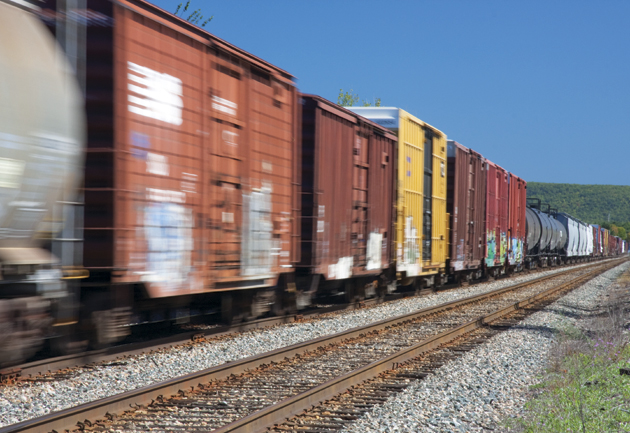4 Steps to Manage Cargo Theft Risk
1. Negotiate preferential positioning when moving goods
Place ocean containers or trailers carrying high-value cargo at the bottom of double-stack cars. Containers on the bottom sit in the well of the car, making it difficult for thieves to open its doors. Also, the container that sits on top blocks access from above. If two 20-foot containers are placed in the same car, stow them with their doors facing each other to serve as a natural barrier to entry.
2. Use strong security seals
With a stronger seal that cannot be easily opened—thieves will have to work harder to gain entry, which may force them to bypass containers in favor of those that are less protected and easier to breach.
3. Reconsider the shipping route and transportation method
Whenever possible, avoid sending shipments through the areas most prone to cargo theft. Businesses that have had success with truck transportation and certain carriers should continue using them, but monitor them to make sure they are reliable and maintain in-transit security protocols.
4. Consider purchasing a marine insurance policy
A marine insurance policy helps protect against losses due to the theft of goods being transported over land, air or sea.– Juan Segura
In Mexico, thieves have set their sights on trains. While cargo theft is nothing new, and trucks are still the main targets, the risk to railroad shipments is increasing, partly as a result of a new, more dangerous modus operandi.
Typically, thieves have attacked slow-moving trains, climbing onto rail cars and tossing cargo trackside where their co-conspirators await to load the stolen goods into trucks. But now, they have started to derail trains, either by damaging rails or railroad ties or by placing obstacles on the tracks, according to FreightWatch International, a logistics security services company. And once derailed, the trains are an easy target.
National statistics are not always reliable, but available figures highlight the severity of the trend. Overall, cargo theft in Mexico increased at least 20% per year from 2006 to 2010, but rail theft is rising at an even faster pace, jumping 120% in 2011, according to T21, a Mexican transportation and logistics magazine.
Due to the high levels of cross-border trade (Mexico is the United States’ second-largest export market after Canada), this has serious implications for both countries, especially since the increase in cargo theft is coinciding with a spike in demand for rail transportation in Mexico. Carload volume for Mexico’s largest railroad, Ferrocarril Mexicano (Ferromex), for example, increased 6.6% in 2011. The volume of its closest competitor, Kansas City Southern de Mexico, increased 15.9% in the first three quarters that year.
Realizing the gravity of the risk, the Mexican government responded by elevating rail theft to a federal crime. National officials are also planning to move some sections of track away from urban areas and busy highways to minimize the consequences of derailment, according to FreightWatch. At $335 million, however, these changes won’t come cheap.
While this is a national trend, the areas most affected by rail theft are in the south-central region of Mexico, including Guanajuato, Nuevo Leon, Michoacan, San Luis Potosi, Sinalao, Veracruz and Zacatecas. As for the most-stolen commodities, in 2011, thieves targeted scrap metals, textiles, furniture, grains and electronics.

